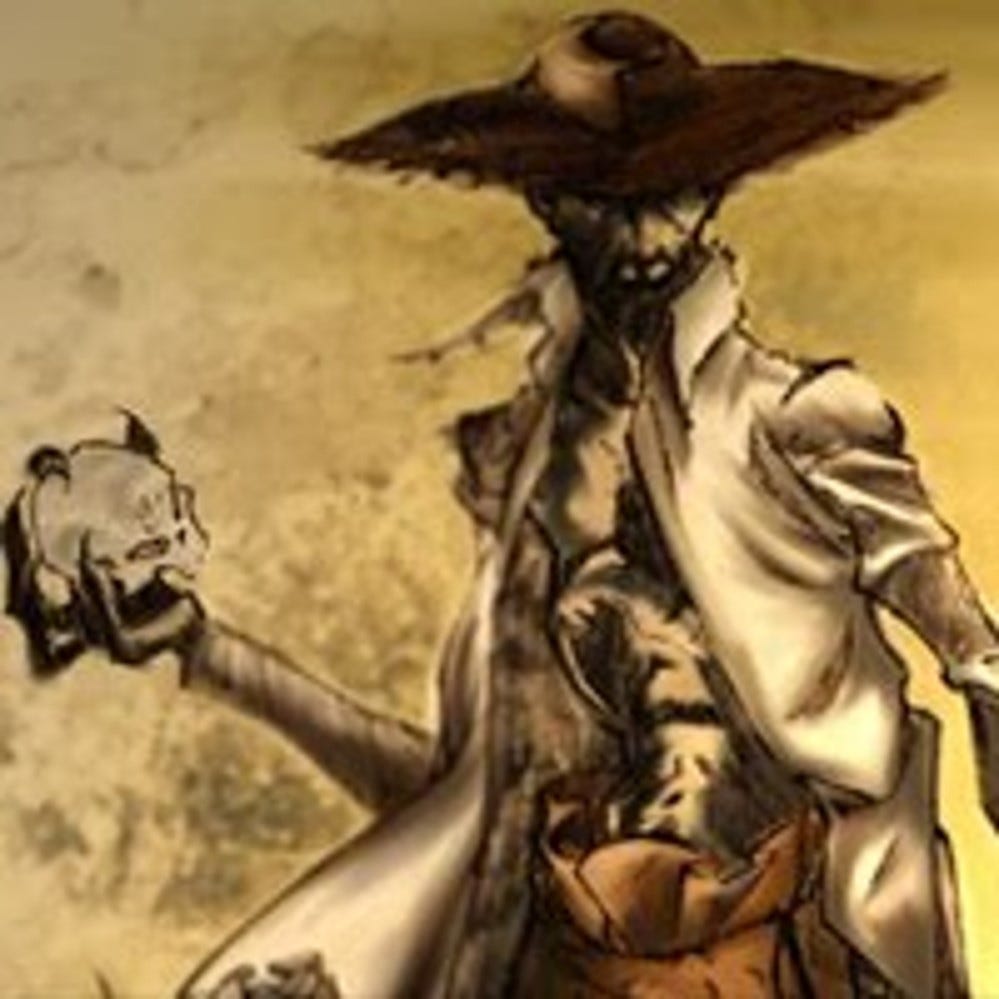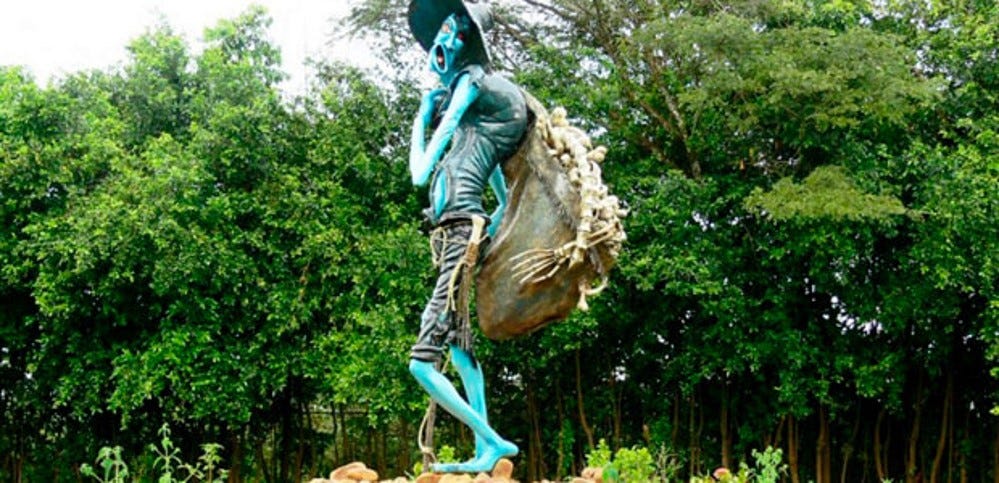The Whistler's Lament
Known as El Silbón, or the Whistler, this urban myth originated during the 1850s in Venezuela's Los Llanos region. Hearing his whistle from far away is a sign of impending doom and death.
The origins of the Whistler started in the plains of Guanarito in the municipality of La Portuguesa, Venezuela.
There are different versions of the legend of The Whistler, but a common theme is a son who murders his father. In one case he is justified in the killing, after he returns home to find his father abusing his mother.
Another story is not so kind, and describes a young man who is spoiled by his parents. He demands his father go to hunt a deer for him, and when his father returns empty-handed, he kills him instead. He gives the heart and liver to his mother to cook. The mother eventually understands that she is eating her own husband. She curses her son for eternity. The grandfather of the family punishes him by lashing his back and then rubbing lemon, salt and pepper into the wounds. A rabid, starving dog named Tureco is set to chase him and nip at his heels endlessly. His grandfather adds his own curse for good measure, which is to carry his father's bones.
Tradition explains that when the Silbón arrives at a house at night, he unloads the bag and counts the bones one by one; if no one can hear it, a family member dies at dawn.
Upon hearing his whistle, if it sounds close you are safe. If far away danger is imminent, and it could foretell your death.
Sightings of the Whistler are more common in the summer when droughts burn the savannas to a crisp. He sits in the limbs of the trees and gather dust with his hands.
However it is during rainy days that he wanders about seeking to punish womanizers, drunkards and sometimes the innocent. His whistle, in particular, catches the ears of drunks and angry men.
When he comes across an alcoholic, he sucks out blood and liquor through their navel, until they are lifeless. Womanizers receive worse treatment, since they are torn to pieces, and he puts their bones in his sack.
He is described as very tall and thin wearing a hat, and a sack slung over a shoulder.
This entity also is known as El Sin Fin or El Fin Fin, meaning "The Endless."
In Columbia he's called "El Silbador" and he's believed to have been a womanizing man that died alone, and he's always in search of one lonely like him, especially during the night hours. However he's also known to follow pregnant women. Depending on how he whistles either a man or a woman will die. If you hear his whistle it means someone you know will soon be dead.
Safeguards against the Whistler is the sound of a dog barking, pepper or a whip. All of these are reminders of his punishment.
There is another character in Venezuelan folklore known La Sayona which is a vengeful, female spirit that like The Whistler punishes unfaithful men.
In life she was a beautiful woman named Casilda or Timotea. The girl was married and had given birth to a baby boy. One day a villager spied her swimming naked in the river. After this he took to watching from a hidden spot while she enjoyed her time in the water. Finally the day came when she realized he was there, and she told him to stop following her, however he was obsessed with the beautiful young woman. Realizing he needed to gain her favor, one day he warned her that her husband was having an affair with her own mother.
Casilda ran home and found her husband asleep with the their newborn in the bed. Blinded by jealousy she burned down the house with her family inside. From there she ran to her mother’s house and attacked her with a machete. As her mother lay dying she cursed her, saying now she would be damned to hunt down unfaithful husbands. This is when she became “La Sayona”.
In another version this vengeful spirit is not limited to unfaithful spouses. She appears to men working in the jungle, especially if they are talking about sex, or the women waiting for them in their hometown. La Sayona will then appear in the likeness of a beautiful woman, or a loved one. This is the guise she uses to lure them into the forest, where she shapeshifts into an animal-like woman that mangles, and eats them. The workmates only find pieces of her victim’s body.
In modern times, La Sayona appears as a beautiful woman wearing a white dress, who asks men for a ride. She has draped her hair across her, face and when the man tries to see what she looks like he discovers she has a skull face with rotting teeth.
Men who come across a long-haired woman bathing in a river in the Venezuelan countryside, are said to go insane or die soon after seeing her. Very few survive to tell the story of their encounter.
Carrying a blessed palm cross is a protection against La Sayona, and she can be driven away by reciting the Credo backwards when using branches of altamisa which is also known as mugwort.
In modern times she has been connected to the devil’s wife.
This figure has elements of La Llorona, the Phantom Lady Hitchhikers in the United States and the Langsuir in Asia.









